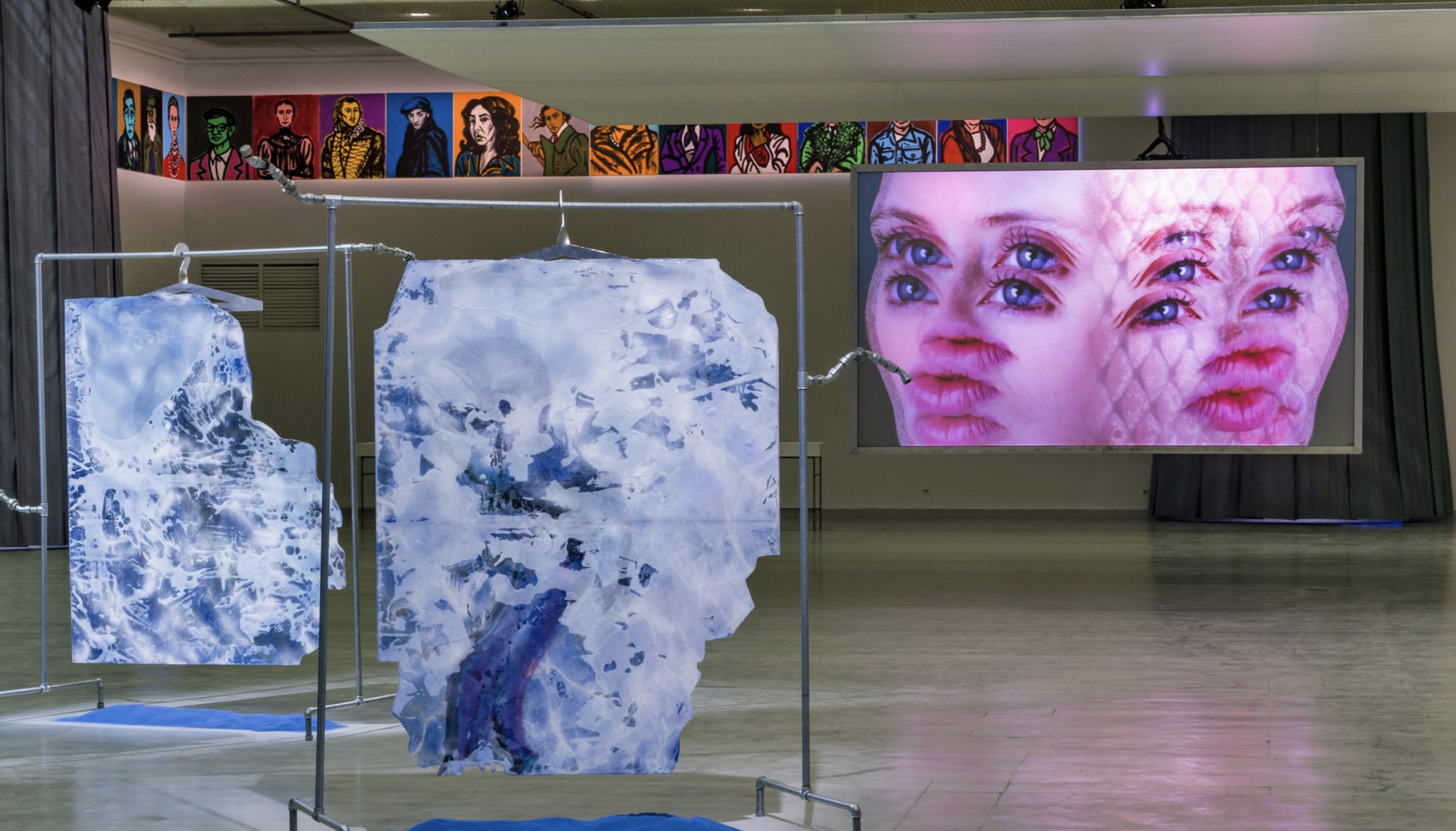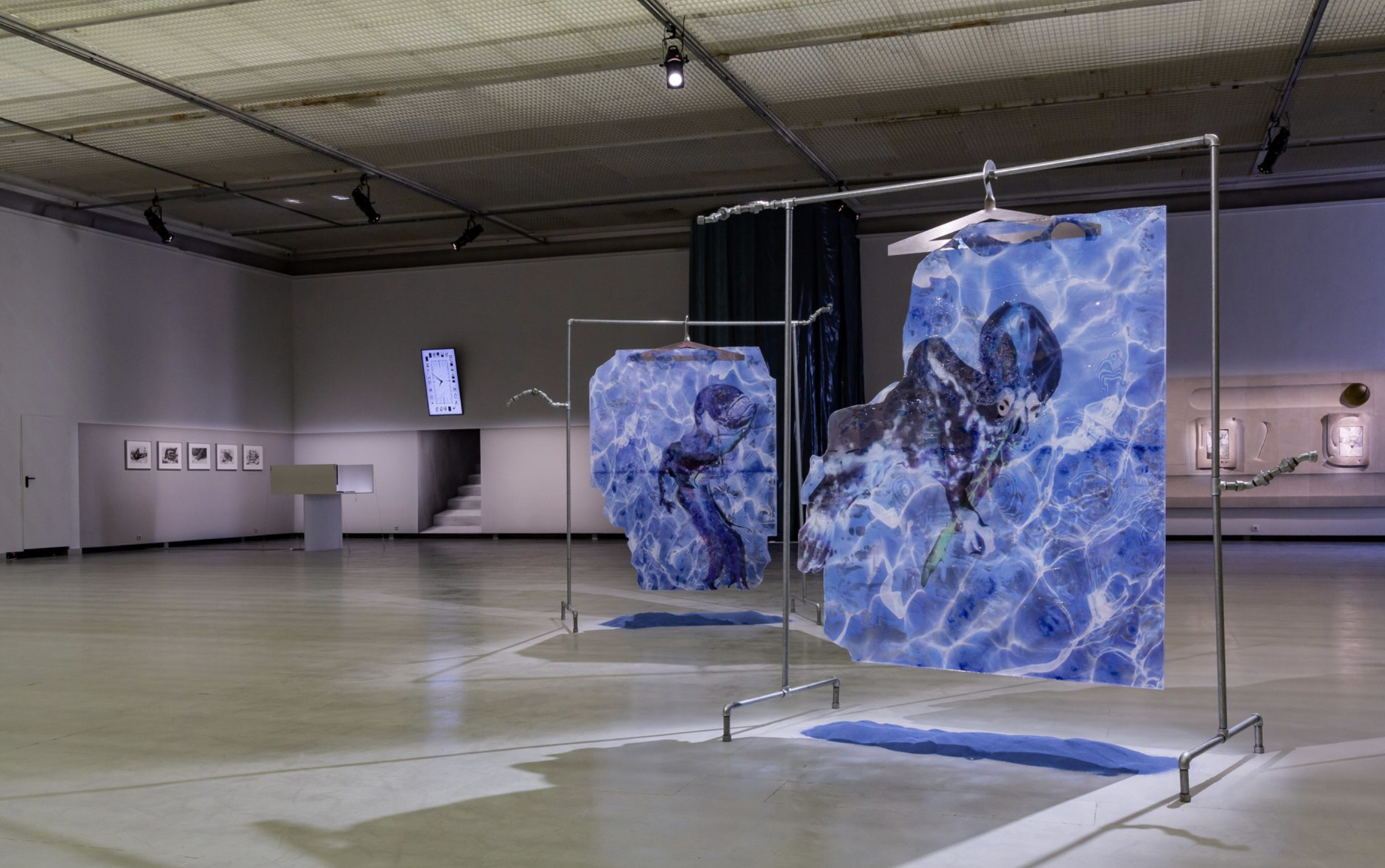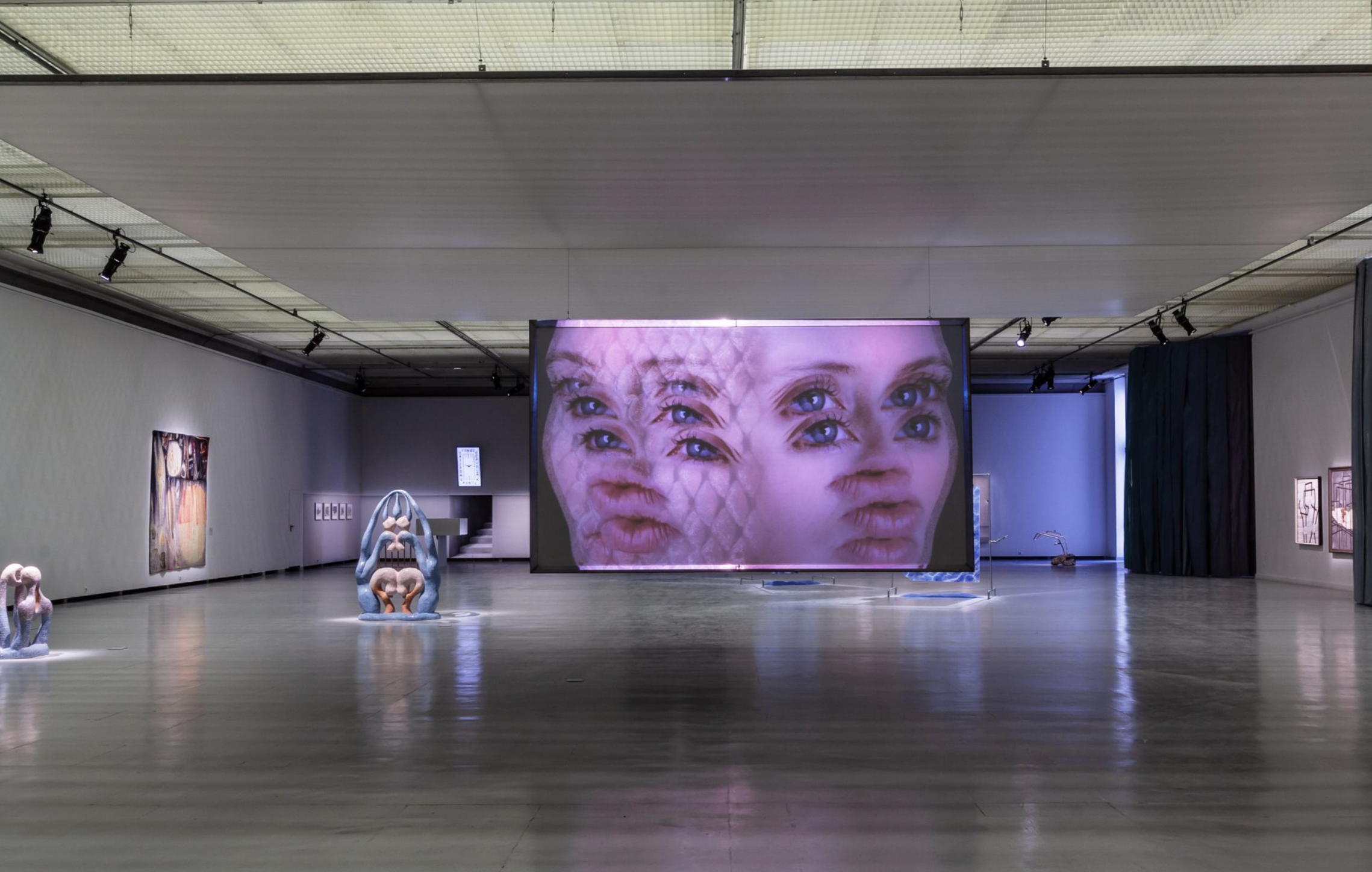“The Endless Frontier” at Contemporary Art Centre, Vilnius
Nada Prlja, Queue, 2007, Baltic Triennial 14, The Endless Frontier installation view at Contemporary Art Centre, Vilnius, 2021. © The artists; Contemporary Art Centre, Vilnius; Ugnius Gelguda
The Baltic Triennial is focusing exclusively on artistic positions from Central and Eastern Europe. There are approximately eighty participants, both historical artists and a compelling survey of emerging ones.1 With their special focus on the Baltics, Lithuanian curator Valentinas Klimašauskas and Portuguese curator João Laia from Kiasma, Helsinki, question belonging and categories. This manifests for instance in the fact that as of 2017, the United Nations classifies the Baltic countries as “Northern Europe,” while the “Nordic countries” category remains reserved for the Scandinavian ones: Denmark, Finland, Iceland, Norway, and Sweden. This blurriness, and the multilayered quality of the region, shaped the curatorial concept of The Endless Frontier as much as the specific selection of artists. The assembled works give form to the feeling that accompanies this condition, whereby the exhibition’s topic is addressed not only politically, but also individually and psychologically.
In-betweenness is not only conveyed through the selected artworks but also through the display of Lithuanian architecture studio Isora x Lozuraitytė. Via interventions of colored plastic curtains, the architects effected a radical reshaping of the CAC’s Brutalist building, (re)choreographing its spaces: covering, hiding, isolating, revealing. The scenography links the exhibition rooms upstairs with the spaces on the ground floor and in the basement that are normally not open to the public, but are now deployed as additional galleries. Even if the various spaces are completely separated from each other in a literal sense, they are at the same time drawn together by the curtains, making the whole building one singular body.
Upon entering each room, one dives into a new cosmos. And the CAC’s main space in the upper floor is one of the strongest moments of the Triennial. The featured works refer to beings that cannot be classified, fluid bodies, infinite states. In the center is Agnieszka Polska’s video Ask the Siren (2017), which makes a duplicated face its main filmic character, but one that is unclassifiable in any social or biological category referring to the figure of the mermaid. Adjacent are three pastel-colored sculptures by Zsófia Keresztes—Solitary confinement (2020), Inconsolable presence (2019), and Circulation in Sorrow (2019)—all demonstrating the Hungarian artist’s interest in fluid bodies and avatars, shape-shifting, forms collapsing, and bodies mirrored through desire, pain, and empathy. These statuesque, incredibly tactile works explore the body on a continuum between the real and the virtual. Experimenting with a wide range of materials such as Styrofoam, textiles, rope, and glass mosaic, these seductive, materially pixelated forms reflect such topical themes as the split self and empathy in the digital age. While Keresztes’s forms are concrete and abstract at the same time, reminding of forms and figures from a science-fiction landscape, Vojtěch Kovařík’s three paintings—The Three Fates: Clotho; The Three Fates: Lachesis; and The Three Fates: Atropos (all 2021)—operate in the realm of iconography and mythology. The three mythical goddesses known as the Fates determined when life began and when it ended. The large-format, forceful, and vividly colored compositions evoke the strength of sculpture. Kovařík’s purposeful exaggeration of human anatomy creates a sense of honesty and naivete in questioning traditional notions of physical strength and power.
The Queer Archives Institute, amassed since 2015 by Polish artist Karol Radziszewski, explores both political and artistic history as a basis for designing future scenarios and actively shaping a queer present. It includes photographs, medals, graphics, queer zines, an and magazines and takes into account the “peripheral regions” of Belarus, Bulgaria, Czech Republic, Poland, Romania, Slovenia, and Ukraine, among others. The marginalized representation of women within popular science fiction films is the topic of Aleksandra Domanović’s installation Things to Come (2014). It encourages reflection on who has taken what role in history, and how that affects the present and future.
A splendid discovery were Danutė Kvietkevičiūtė’s wall-mounted tapestries Grass (Dedicated to M.K. Čiurlionis) (1975), At the Speed of Thought (1975, 1978), To Live (1981–82), and The Hours of Bloom (2009), in which the artist addresses human relations with nature, space, the universe, death, and the fragility of being. The depicted cosmologies refer to dynamics of the universe that address fundamental questions about its origin, structure, evolution, and ultimate fate. On the other side, Lithuanian artist Emilija Škarnulytė’s film Undergrounded Archive (2020) addresses nonhuman and post-human scales, in the depths of space and time. The work journeys through underground spaces, including laboratories for researching the burial of radioactive waste deep in geologic strata.
The Triennial maps Central and Eastern Europe as a kaleidoscopic, queer space-time with a strange realism whose extraordinary polyphonic juxtapositions echo the complexity of the world at large. In their introduction in the accompanying booklet, Klimašauskas and Laia reflect that the triennial “is set with the conviction that in a paradoxical time of fragmented integration, addressing the local is, simultaneously, to question the global.”2 The curators’ approach aspires to detach from a post-Soviet lens, while not neutralizing history. And in my view, they have succeeded in doing exactly that, since the exhibition offers a view onto complex issues that reach far beyond the porous boundaries of this geopolitical region: human-caused industrial disasters, nativist nationalism, or the oppression of nonnormative identities. They underscore how both historical and contemporary artists hailing from former USSR countries are countering these tendencies.
In accordance with the exhibition’s concept to present multiple voices of the region, the Vilnius-based project spaces Atletika, Autarkia, Editorial, Rupert, and Swallow were invited to develop autonomous projects with artists from Lithuania and abroad. The decentralization of the Triennial offers a polyphony beyond institutional walls.




